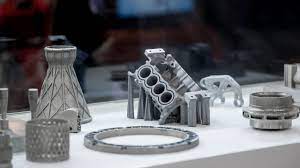Manufacturing companies around the world are using 3D printing for prototyping and end-parts production. The technology is quickly becoming a leading trend in the industry, alongside digitization and AI/robotics.
3D printing is a single-step manufacturing process and requires minimal interaction from operators. It also removes dependence on traditional manufacturing processes and improves control over the final product.
Medical
Using 3D printing to produce medical-grade parts allows for rapid prototyping and on-demand production. This makes it easy to provide customized equipment, reducing costs and improving the quality of care. This is especially important in remote areas where the cost of regular delivery and transportation is high. For example, 3D metal printers can create low-cost prosthetics for people who need them and can’t afford traditional medical equipment.
In addition to patient-matched anatomical models, surgical guides and prosthetics, doctors are also using 3D printing to create patient-specific organ replicas to practice procedures and teach students. These tools help surgeons prepare for surgery and reduce the number of complications during operations, saving time and money. Similarly, the ability to print bone structures and limb replicas helps researchers and innovators test out new treatments and techniques.
Rail
The rail industry faces unique challenges compared to other sectors. It must operate a complex mode of transportation with one locomotive pulling dozens of cars behind it and often traversing rough terrain that would challenge even the toughest automobile. This demanding sector requires fully reliable solutions to help ensure passenger safety, which is why many rail companies have turned to 3D printing.
3D printers are being used to produce a variety of parts, including end-use tools and components, rapid prototyping, composite tooling, and jigs and fixtures. A few of the most popular applications include replacing obsolete spare parts, which is helping speed up repair times and get trains back into service more quickly. 3D printed tooling is also reducing the need to pay for tools through suppliers, which is saving money and enabling rail companies to control production workflows and improve quality.
Stratasys has developed a rail-specific solution, called the Stratasys Rail Industry Solution, which is designed to meet the needs of the industry. The solution combines the company’s FDM and SLS technologies with a high-temperature material that is compliant with the Rail Industry Standard EN45545-2. The material is ULTEM 9085, which has higher strength and heat resistance than traditional thermoplastics. Using the solution, Bombardier Transportation, a leading railway system manufacturer, is accelerating its development process by 3D metal printing services spare interior and exterior train parts. The company joins other leading rail players, including Angel Trains, Chiltern Railways, DB ESG, and CAF, in using the technology to improve the quality of train interiors, as well as exterior design and components like door handles and wiper covers.
Automotive
The automotive industry invested in 3D printing almost as soon as rapid prototyping technologies became available, and it has been leveraging the technology throughout its manufacturing and design processes ever since. Today, automakers are using 3D printers to create everything from functional prototypes to final production parts for cars, trucks and SUVs.
With the rapid prototyping capabilities of 3D printers, automotive designers can produce multiple design iterations in a fraction of the time required using traditional methods. This accelerates the process of testing out new ideas and identifying potential issues early in the development cycle. This can help reduce the risk of expensive and labour-intensive tooling investments and enables companies to stay competitive in a fast-paced market.
3D printing is also being used in the manufacturing of replacement or spare parts for existing vehicles. The process allows the creation of parts that are more durable, fit better and can be produced quickly to meet a short lead time. This enables businesses to maintain production continuity and avoid a bottleneck in their supply chain.
In addition to replacing or repairing existing parts, the automotive industry is using 3D printing to produce lighter weight components that can improve fuel efficiency without sacrificing safety or performance. Increasingly, car manufacturers are turning to lightweight materials that are easier to 3D print, such as carbon fiber composites. This is one of the many ways that additive manufacturing can help the automotive industry become more sustainable and reduce its environmental impact.
Aerospace
Aerospace is one of the first industries to embrace 3D printing, and it’s an integral part of production. Aircraft and their components are used in high-stress environments, and they often require complex, lightweight parts that can be printed quickly and efficiently. AM reduces lead time, cuts costs and provides flexibility, while allowing for greater customization.
This is especially true of metal AM, which enables the aerospace industry to create components that are stronger and lighter than those produced through traditional manufacturing processes. These lighter components lower the aircraft’s weight, and in turn, fuel consumption, carbon dioxide emissions and other operational costs. Combined with the power of Design for Additive Manufacturing, which allows the engineer to build in performance and strength from the ground up, this is a powerful combination for airlines and aerospace producers.
Interestingly, 3D printing is also being utilized to print tools for human-powered vehicles. Startup AREVO, for instance, has built carbon fiber bikes that require almost zero human labor. This has huge implications for the world of human-powered transportation, and demonstrates the broad range of applications that can be leveraged to support the movement toward cleaner and more sustainable alternatives.
The future of 3D printing in aerospace will depend on a number of factors. Certification and qualification processes, stringent quality control measures and scalability challenges must all be overcome. This will enable the industry to fully harness the potential of this technology, creating safer and more efficient aerospace systems.

